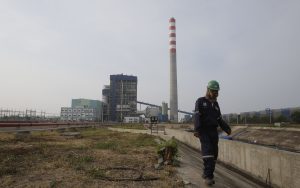Southeast Asian economies are growing fast, and investment in energy infrastructure to fuel that growth is racing to keep up. In 2018, the Philippines, Thailand, Vietnam, Malaysia, and Indonesia had a combined GDP of $2.5 trillion and generated 939,803 GWh of electricity. The Asian Development Bank estimates that from 2016 to 2030, the region will soak up $14.7 trillion of investment in energy infrastructure, leaving little doubt that much more generating capacity is going to be built in the coming years.
The question is what kind of capacity will it be?
Investors, developers, utilities, and governments are laying the groundwork now for energy systems that will last for decades, and the choices they make will determine whether these fast-growing economies get locked into high-carbon footprints, or whether they can finesse the transition to more sustainable models of energy governance. Those looking for a magic bullet that can affect this transition, such as a tax on carbon, are likely to be disappointed. Southeast Asia is a large and diverse region, and one-size-fits-all approaches will have limited traction.
More important is understanding how the state exerts control over domestic fossil fuel resources and the rents derived from them. As long as states in Southeast Asia can control their own energy destinies, market-based solutions like taxes or subsidies designed to nudge them toward renewables will be weak motivation. Many countries have spent decades building large and powerful economic sectors around the exploration, extraction, consumption, and exportation of fossil fuels, and that cannot be hand-waved away. Decoding these motivations is key to figuring out what path a country is likely to follow, where market-based solutions might have some cachet, and where trickier and more painful political choices and trade-offs may be required.
Thailand and Vietnam have been leading the pack in Southeast Asia when it comes to renewables, gradually liberalizing energy markets and seeking to give private capital a bigger role in the industry. These changes did not occur in a vacuum, however. In Thailand, the political class and other interest groups started getting serious about reforms around the time the domestic fossil fuel supply began to dry up. Thailand’s domestic production of natural gas, its largest fossil fuel resource, peaked in 2014 and after that the onboarding of renewables like solar increased at a much quicker pace.
In other words, when the ability of the state to determine its own energy destiny through the control and extraction of fossil fuels began diminishing, that’s when Thailand pivoted in earnest toward renewables.

































